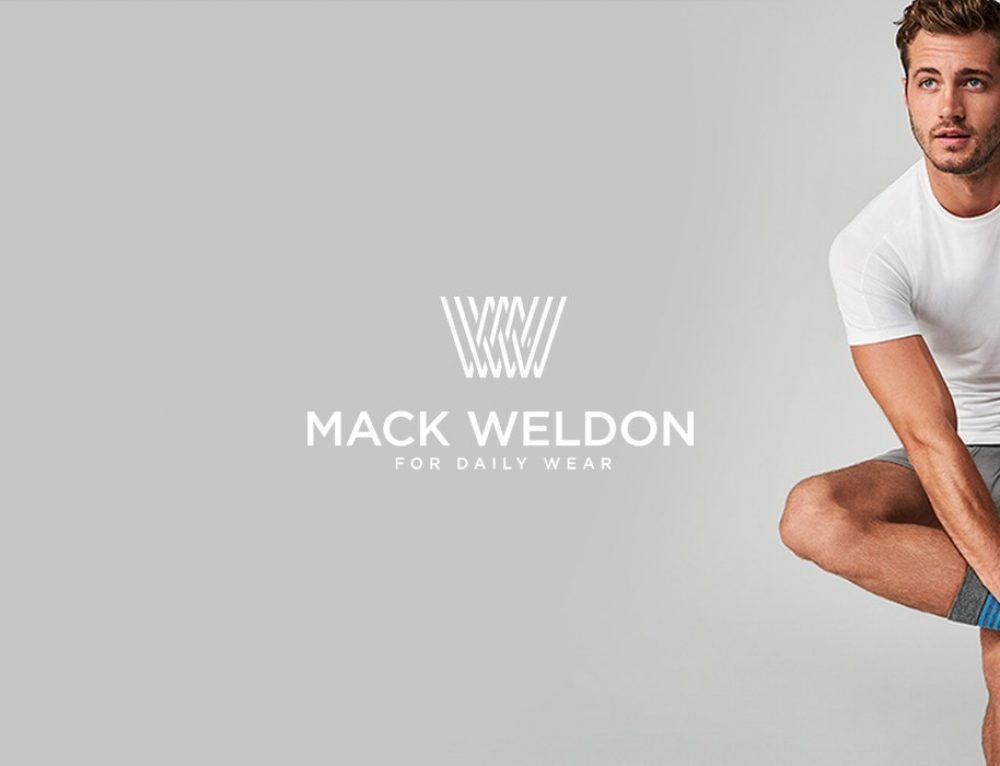CEO Mack Weldon shares how he set out to reinvent men’s basics after a bad experience while shopping for underwear and socks.
Article by Rimma Kats | via eMarketer
Having experienced the frustrations of shopping for underwear and socks firsthand, Brian Berger, founder and CEO of men’s lifestyle brand Mack Weldon, set out to reinvent men’s basics.
“The experience of going to a department store wasn’t great; the product experience was really inconsistent and not living up to the price tag,” Berger said. “The marketing was strange. It was mostly … kind of sexually charged lifestyle ad campaigns. To me, it was much more relevant to market our products in a way that was similar to Nike, Under Armour or lululemon athletica—products that, even though you wear them on a kind of lifestyle basis and they are touching your skin, have a really important functional component.”
We recently spoke with Berger about Mack Weldon’s evolving loyalty program, what the company has learned since launching a retail store in New York City last year and why its ongoing efforts may vary from other direct-to-consumer (D2C) brands.
Mack Weldon has been around since 2012—longer than many D2C brands. What have you learned?
When we launched, there were two important things we did to address some realities of the category. First, we instituted a “try-on guarantee” to drive loyalty. We said, “Listen, if you buy something from us, and you don’t like it, it doesn’t fit or the style isn’t right, the first pair is on us. We’ll swap it out for free, refund your money and get you in the right place.” Second, we established a volume-based pricing model. We never wanted to have a sale. We never wanted to do any promotional marketing. But we recognized that consumers wait around for sales in this category. So depending on how many products you buy and how big your cart size is, you can qualify for different levels of savings. The point was to drive up average order value by getting customers to stock up and giving them an economic benefit for doing so.
Several years in, we decided to turn that model on its side and implement more of a loyalty model. We wanted to increase purchase frequency because we felt that would drive greater loyalty—particularly as we introduced new products. And obviously, through greater loyalty would come higher lifetime value. So we created a loyalty program that consists of two tiers and right out of the gate, we saw repurchase rates improve on the order of 25% to 30%, and we saw lifetime value improve on the order of 10% to 15%.
Are you already thinking about the next evolution of your loyalty program?
We’re constantly hearing from customers, “Hey, how do I get to level three?” And we’re like, “Well, we don’t have a level three yet. But it’s good you’re thinking about it.” A big part of how we’re thinking about that next level of loyalty is how we leverage our customers as marketers in a way that is authentic and organic. For example, the whole notion of, “you buy and I get some sort of commission for it,” that doesn’t really work. We really want to supercharge what’s already happening.
When we think about evolving the program in 2020, we’re looking to address our most loyal customers. And the main focus is trying to build an ambassador program that activates our most loyal customers and does so in a way that they’re proud of and doesn’t hamper—it accelerates what they’re already doing for us.
For those not familiar with the brand, what marketing channels are you relying on to drive engagement, and ultimately, sales?
In the early days, we were all able to enjoy a level of arbitrage opportunities that existed on Facebook and Google, which enabled us to grow our business in a relatively cost-effective way. Over the years, we have constantly focused on not only making sure we’re on the front edge of knowing how to optimize those two core channels, but also thinking about how to diversify our advertising away from those channels.
We were also a first mover into podcast advertising, which proved to be a really effective and efficient channel for us. Of late, we’re spending more time in channels like radio: satellite radio primarily, but also a little bit of terrestrial radio. It’s where we’re able to get very broad reach and capture some level of attribution that we care about.
Why are you seeing such engagement on radio specifically?
Part of it is targeting. You have a highly qualified customer that’s engaged and segmented, and you’re able to target them on this massive channel. It’s also a new format where I could give the founder pitch that lends a lot of credibility to the value proposition, and I think certain segments of customers really value that. These are people who may not be spending as much time on social media or digital channels as well.
You’re approaching the one-year anniversary of your Hudson Yards physical store launch in New York City.
Yes, we always believed that having physical touchpoints would be important, and we learned a ton, most of which has been very positive. It confirmed a lot of things. One, just having a physical space and bringing the brand to life in a way that can’t really be achieved online. And two, from a customer impression and merchandising standpoint, customers instantly see the breadth of our offering. And in many cases, it’s a surprise to them because when we market to them online or through email, they’re getting a very narrow view.
When you walk into a store and see our products, including outerwear, sweats, polos and seasonal, you immediately get a sense that we’re a lot more than what you’ve typically seen from us. We are enthusiastic to do more opportunistic, direct retail experiences like this, supported by what we’re generically calling “basics bars,” which could take the form of anything, including a pop-up with limited inventory, our partnership with Neighborhood Goods, or a supercharged retail partnership with Nordstrom. All of it is about putting our brand in the path of our consumer.
This overarching trend of digital brands going into physical retail, it’s not a one-size-fits-all strategy. For example, Warby Parker has different reasons for opening up stores than our reasons at Mack Weldon. For us, it’s really about doing it selectively, bringing the brand to life in many of our key markets with high customer density and where the real estate dynamics are.
Anything else you have coming down the pipeline that you can share?
We’re focused on evolving our offline strategy in terms of distribution, including capitalizing on Hudson Yards [in New York], being smart and thoughtful about retail partnerships, and being opportunistic about physical retail opportunities.
Part of that is distribution, but the other part relates to advertising. We’ve learned that the more places and opportunities we give customers to buy our products, the more we are able to rationalize our overall ad spend and investment in marketing. We’re making millions of impressions every month, but only a very small percentage of those impressions are converting, because there are customers who are never going to buy online. But if they bump into us at Equinox, Nordstrom, Neighborhood Goods or Paragon Sports, they can touch the product and try it on, which may make them more likely to convert. So our thinking about retail expansion has as much to do with marketing as it does creating an alternative distribution channel.












